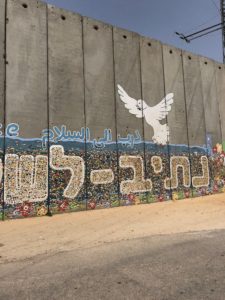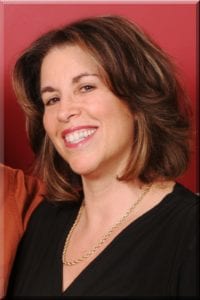Guest Columnist
Lisa Shapiro
Who knew that the Jewish people were the devil in disguise?
Yet this has been our reputation among many Syrians…except, that is, the Syrian war victims who have been treated at the Galilee Medical Center in Nahariya, Israel. They have discovered that Israelis are just people…with heart.
In Gaza, too, many residents think Jews are heartless. Yet when women from a nearby moshav (Israeli community) show up at the border checkpoint with offers of food and assistance, offering help in procuring them medical care, minds are changed, hearts are opened.
Peace has a chance.
I was moved by many social justice programs on my recent trip to Israel, which was led by Rabbi David Ariel-Joel. Both the hospital and the moshav experiences that I was privileged to see embodied a quote I once heard: “Peace imposed from the top to the bottom shall not stand without the hearts of the people being ready. Once the hearts of the people are ready, peace can happen.”
The Galilee Medical Center, located just six miles from the Lebanese border and close to Syria, exemplifies two seemingly contradictory Jewish values: preserving the sacredness of life, while at the same time exercising the duty of self-defense.
The hospital operates under a government mandate of adam l’adam (a person is a person), a term coined by its director, Dr. Masad Barhoum. The hospital must treat an enemy just as it would an Israeli.
Wounded Syrian civilians hear of the hospital by word of mouth. When they are picked up at the Syrian border by the Magen David Adam (the Israeli equivalent to the Red Cross). Often terrified, having been told that Israelis are Satan, they fear being murdered as traitors by their government for coming to Israel, but they run the risk.
The Galilee Medical Center is the main treatment center for Syrian civilian casualties who seek life-saving care across the border. More than 2,400 Syrian men, women and children had been treated there by April 2018.
The average Syrian stays 20 days, some up to a year, going through as many as 20 surgeries per person. Their injuries, frequently the result of high-velocity weapons, include penetrating head wounds and oral and maxillofacial trauma. Over 70 percent of Syrians seeking treatment come here even though The Galilee Medical Center is not the closest hospital to the Syrian border.
Concerned that their patients could be discovered seeking treatment in Israel, hospital staff cut out any Hebrew labels from their clothing before sending them back to Syria. Instead of giving them crutches made in the Jewish state, they procure them from Jordan, so no Hebrew lettering is imprinted.
Even though the hospital is “preparing the hearts of the people for peace,” it does have to prepare for war. The facility is so close to the Lebanese border that it boasts Israel’s first and only fully operational underground hospital. Empty beds, gurneys and medical equipment are stacked up in the lower basement, waiting for the next attack. Within 30 minutes of an alert, patients can be re-located there. The cardiology department was built just above the fortified ER, enabling rapid transfer of cardiac patients.
At Moshav Netiv Ha’Assara, only a few yards from the Gazan border (in the shadow of an imposing security wall), our ears were threatened by a low, male roar of rage from the other side: protests.
Nevertheless, an elderly woman, Roni Keidar, who lives in the moshav, invites groups to her compound to build compassion for Gazans. They make beautiful art projects – mosaics of peace.

A security barrier between an Israeli moshav and the border with Gaza has been decorated with symbols and slogans for peace. (photo provided by Lisa Shapiro)
“Angry neighbors are dangerous neighbors,” Keidar said.
She and others from her moshav lead small groups to the checkpoints to ask Gazans on the other side if they need assistance with things such as Israeli visas for specialized medical care.
To see a doctor in Israel, the average Gazan needs papers from three entities: Gaza, the Palestinian Authority, and the Israeli government. These moshav women assist them with the task of cutting through the Israeli bureaucracy. They also offer them food and sometimes medicine.
Adam l’adam (a person is a person)
“After an attack,” one Israeli told me, “we still have to share the same road, shop in the same markets…and must fight our inner fanatic.”
These are two examples of Israelis trying to forge friendships, programs and alliances, which create an infrastructure among shechanim (neighbors.) When we learn with each other – about each other and from each other – peace can ensue.
Lisa Shapiro, LCSW, has been a Louisville resident for 33 years. She is a psychotherapist in private practice.



